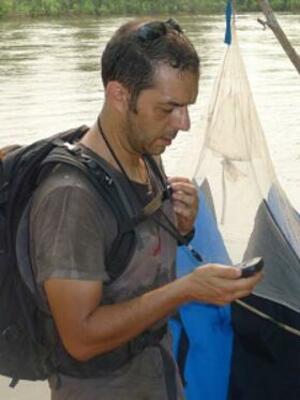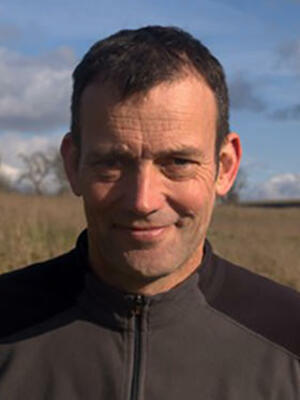BMGF reference: INV-001785

The Trypa-NO! 2 project builds on the progress and gains made in the original Trypa-NO! investment in Chad, Cote d’Ivoire, Guinea and Uganda. The project will secure the gains that have already been made and continue to develop strategies for HAT elimination and post-elimination goals and ensure the integration and sustainability of HAT control in the targeted countries. As with the original Trypa-NO!, the project is funded by BMGF and led by FIND.
This second phase for the consortium has two main objectives:
- Driving to zero
- Continuation of activities to drive HAT case numbers to zero in Chad and Guinea, using existing interventions and innovative strategies
- Support for elimination validation in countries that are ready to verify elimination as a public health problem (Uganda, Ivory Coast, and potentially Chad)
- Securing the gains
- Support country programs to develop and validate strategies to maintain HAT elimination (Uganda and Ivory Coast)
- Activities in trans-border areas to protect the original Trypa-NO! gains (Guinea, Chad, Uganda)
- Sustainability, Integration, and the HAT program legacy (all countries)
LSTM is specifically involved with vector control activities in Uganda working with the national control programme (COCTU). We will also continue to provide some technical support in Chad and also start providing support to selected countries outside the original Trypa-NO! geographies – South Sudan, Cameroon and Equatorial Guinea.
Scaling back tsetse control
Large-scale tsetse control has been implemented in Uganda since 2014 by COCTU and District Entomologists, at the height of operations under Trypa-NO!, approximately 6,000km2 was covered. In this next phase we will start a controlled scale-back of tsetse control in areas that we consider to be low risk, this is defined as areas that have had at least five years of control and no reported HAT cases during the five years. We predict that under Trypa-NO! 2 our intervention area will reduce from ~4,000km2 to 2,500km2.
Routine entomological monitoring by the District Entomologists will continue for the project using the same trapping sites that were sampled during Trypa-NO!, this will allow us to monitor the rebound of tsetse in areas after vector control is withdrawn.
Our plans are based in there being no new cases during the Trypa-NO! 2 project but we do have contingency plans in place to be able to react for any emergence of new cases.
Scaling back in Uganda will be the first ever test of the hypothesis that vector control can be safely withdrawn, allowing tsetse populations to recover but without the re-emergence of gHAT. The strategy relies on the assumption that T. b. gambiense has been locally eliminated through a combination of screening the human population and controlling vectors for a period of at least five years. We will test this hypothesis with intense monitoring and safeguards in place that will allow us to re-introduce vector control and screening rapidly should gHAT re-emerge.
Risk based monitoring
We will introduce a risk-based monitoring strategy to complement the monitoring by the District Entomologists. We will use geostatistical methods to identify areas where there is risk of tsetse reinvasion following the withdrawal of Tiny Targets and we will also combine this risk map with historical gHAT case data. We will use this to identify potential trapping sites where potential densities of tsetse are predicted to be high. We will intensively sample at these sites and tsetse that are collected will be screened for infection. If gHAT infection is detected then we will react immediately with deployment to control the tsetse population and interrupt transmission. As part of this work we will strengthen local laboratory capacity so that tsetse samples can be screened without the need for samples to be transported to Kampala or Liverpool as currently happens.
Monitoring the re-bound of tsetse population the following the scale back of targets and analysis of field-caught tsetse for infection will not only provide the necessary surveillance system for Uganda but will also serve as a model for sustainable monitoring systems in other countries approaching and ultimately achieving the elimination goal.
Capacity strengthening
Under the Trypa-NO! project we established a capacity strengthening programme for COCTU and the District Entomologists, using the 5-step methodology of LSTM’s CCR. As part of this work we conducted a capacity strengthening needs assessment and then developed a capacity strengthening action plan with a set of capacity goals and actions required to achieve the goals. We have already implemented parts of the action plan and will continue working on the remaining goals under Trypa-NO! 2. These activities will include professional development opportunities and the introduction of a new data collection tool. We will also produce a range of new SOP documents based on our experience scaling back tsetse control along with new training documents. This will help to provide a tool kit of resources which will be applicable to other countries covering everything from how to initiate tsetse control in a new country all the way through to how to scale back control and monitor in a rational
Technical assistance outside Trypa-NO! 2 countries
Some of the Ugandan Districts in our current intervention area border South Sudan where gHAT is endemic and control is complicated due to security reasons. The impressive gains made in Uganda are threatened by movement of infected people from South Sudan and also by the risk of invasion of tsetse flies on transborder rivers. We will start to do exploratory work with the control programme in South Sudan to develop a strategy for introducing Tiny Targets in the transboundary area.
There is also interest from other countries in using Tiny Targets. Cameroon is a notable example, with funding from the UK’s Grand Challenges Research Fund, the Centre for Research in Infectious Diseases (CRID) in Yaoundé has started deploying Tiny Targets over a 500km2 area of the Campo focus. The focus also borders the Campo river focus of Equatorial Guinea. LSTM is providing short-term technical assistance to CRID to advise on the use of Tiny Targets and assist in the development of a gHAT elimination strategy with Equatorial Guinea.






